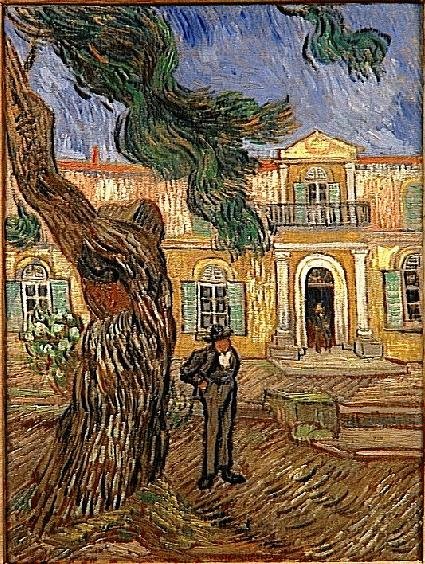Vincent van Gogh’s “Starry Night” is a masterpiece that transcends the boundaries of time and culture, captivating the hearts and minds of art enthusiasts around the globe. Its significance extends far beyond the canvas, encapsulating the essence of human emotion and creativity.
In this blog, we delve into five compelling reasons why “Starry Night” remains one of Vincent van Gogh’s magnus opus and iconic works, along with some lesser-known facts that add depth to its mystique.
1. A Gateway to the Soul
Van Gogh’s “Starry Night” serves as a window into the artist’s tumultuous inner world, offering viewers a glimpse of his emotional turmoil and profound sense of isolation.
Through swirling brushstrokes and vivid colors, van Gogh conveys the restless energy of the night sky, inviting us to contemplate the mysteries of the universe and our place within it.
2. Revolutionary Style
The painting exemplifies van Gogh’s revolutionary approach to art, characterized by bold experimentation and a departure from traditional techniques. His use of thick, swirling brushstrokes and intense, contrasting colors paved the way for the emergence of modern art movements such as expressionism and abstraction.
3. Symbolism and Meaning
“Starry Night” is replete with symbolism, inviting viewers to embark on a journey of interpretation and discovery. The swirling sky, with its crescent moon and radiant stars, symbolizes van Gogh’s spiritual quest for meaning and connection. The stately cypress tree, often associated with death and eternity, serves as a poignant reminder of life’s transient nature.
4. Cultural Iconography
Van Gogh’s “Starry Night” has achieved iconic status in popular culture, transcending its status as a mere painting to become a symbol of creativity, inspiration, and resilience.
Its imagery has been reproduced on everything from t-shirts to coffee mugs, immortalizing van Gogh’s legacy and ensuring the painting’s enduring relevance in the modern world.
5. Artistic Legacy
“Starry Night” stands as a testament to van Gogh’s enduring legacy as one of the greatest artists of all time. Despite facing numerous challenges and setbacks in his lifetime, van Gogh persevered in his artistic vision, leaving behind a body of work that continues to inspire and captivate audiences to this day.
Now, let’s uncover some lesser-known facts about “Starry Night” that add layers of intrigue to this iconic painting:
1. Painted from Memory
Contrary to popular belief, van Gogh painted “Starry Night” from memory rather than directly observing the night sky. This lends the painting an ethereal quality, blurring the lines between reality and imagination.
2. Inspired by a View from His Window
While staying at the Saint-Paul-de-Mausole asylum in Saint-Rémy-de-Provence, van Gogh painted “Starry Night” based on the view from his window. The swirling sky and tranquil village below became the backdrop for his visionary masterpiece.

3. Depicts Venus
First of all, the bright, star-like object in the upper-right corner of the painting is often mistaken for a star. However, it is actually the planet Venus. Van Gogh’s meticulous attention to astronomical detail adds a layer of scientific accuracy to his artistic expression.
4. Multiple Versions Exist
In addition to the iconic rendition housed at the Museum of Modern Art in New York City, van Gogh created several other versions of “Starry Night” with slight variations in composition and color palette. These lesser-known iterations offer insights into the artist’s creative process and evolution.
5. Interpretive Challenges
Despite its universal acclaim, “Starry Night” has spark debate among art historians and critics regarding its precise meaning and interpretation.
Some scholars have linked the painting to van Gogh’s struggles with mental illness, while others emphasize its spiritual and philosophical dimensions.
In conclusion, Vincent van Gogh’s “Starry Night” remains a timeless masterpiece that continues to captivate and
inspire audiences with its emotional depth, innovative style, and enduring symbolism.
As we unravel the layers of meaning within this iconic painting, we discover new facets of van Gogh’s genius and the profound impact of his artistic legacy on the world stage.



